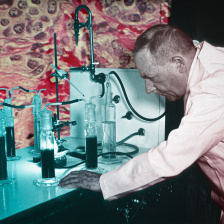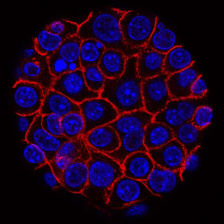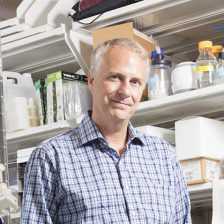
Late stage cancer cells in a pancreatic tumor. Credit: Mandar Deepak Muzumdar, Koch Institute
MIT Koch Institute
August 19, 2024
Researchers from the Vander Heiden Lab showed that cancer cells prefer the nutrient landscape of their tissue of origin, even after they metastasize.
Using genetically engineered mice to generate pancreatic cancer cells, the team analyzed primary cancer cells from the pancreas and metastatic cancer cells from the liver. After transplanting both types of cells into the liver and pancreas, they found not only that metastatic cancer cells grew better in the pancreas, but that their metabolic programs more closely resembled primary cancer and healthy cells in their home tissue than in the liver.
The results, published in Nature Metabolism, suggest that the metabolic programs developed in a cancer cell’s tissue of origin may explain why cancers tend to metastasize more frequently to certain organs and tissues: the metastasizing cell would only be able to thrive in nutrient environment that retains some similarity to the primary tumor site. The results may also explain why some metabolism-targeting chemotherapies are effective for treating both primary and metastatic tumors when a patient’s treatment was selected based on the tissue of origin.
This study was funded in part by the Lustgarten Foundation, the MIT Center for Precision Cancer Medicine, the Ludwig Center at MIT, and the Emerald Foundation.



